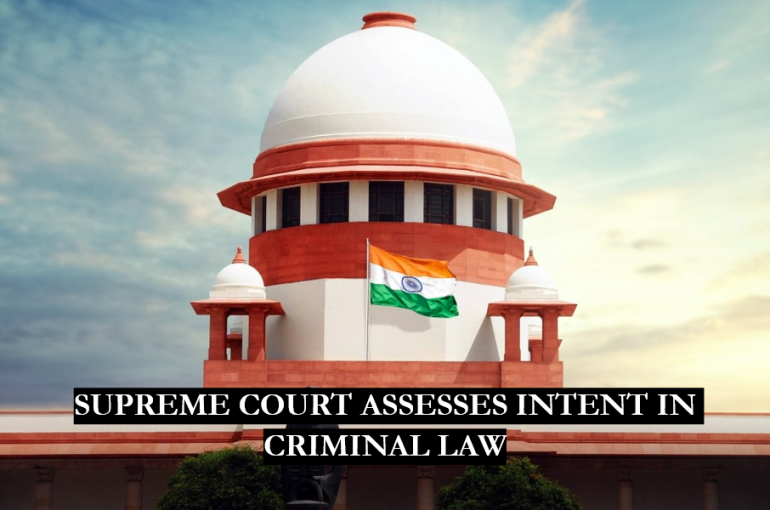SUPREME COURT ASSESSES INTENT IN CRIMINAL LAW
Introduction
In the criminal law, the interpretation of intent plays a pivotal role in the adjudication of serious offences. One such case that brings this issue into focus is Shoyeb Raja v. State of Madhya Pradesh, Criminal Appeal No. 3327 of 2024, wherein the Supreme Court of India by Judgement dated 25.09.2024 addressed the Application of Section 307 of the Indian Penal Code (IPC), concerning attempt to murder. The case arose from a violent dispute between members of a Masjid Committee, leading to significant legal debates over the extent of injuries and the intent behind the actions of the Accused.
Background
Shoyeb Raja, the Complainant, was the Chairman of the District Waqf Board in Seoni. A conflict arose between the newly appointed Masjid Committee, headed by the Complainant, and the previous committee, leading to an altercation.
The Complainant was physically assaulted and rendered unconscious. Following the incident, he was treated at a hospital, and an FIR was filed against the Accused under various Sections of the Indian Penal Code (IPC), including Section 294 of IPC (Obscene acts and songs), Section 323 of IPC (Voluntarily causing hurt by dangerous weapons or means), Section 506 of IPC (Punishment for criminal intimidation), and later, Section 307 of IPC (attempt to murder).
The Accused were initially granted bail but were later taken into custody under Section 307 IPC.
Lower Court’s Decision
The Sessions Court framed charges against the Accused under Sections 294, 332 (Voluntarily causing hurt to deter public servant from his duty)/34, and 307/34 IPC. However, the framing of charges under Section 307 was challenged in the High Court.
The High Court ruled that there was insufficient evidence to support the charge under Section 307, based on medical reports, which indicated that the injuries were not life-threatening. As a result, the court acquitted the Accused of the charges under Section 307 IPC while confirming the charges under other sections.
Supreme Court’s Observations
1) Intent to Murder and Medical Evidence: The Supreme Court disagreed with the High Court’s dismissal of the Section 307 charge, noting that while the injuries were deemed superficial, the medical report highlighted the possibility of throttling, which could have led to respiratory arrest. The intent to cause death, as required under Section 307 IPC, could not be ruled out based solely on the superficiality of the injuries.
2) Legal Precedents on Section 307 IPC: The Supreme Court cited multiple precedents, emphasizing that the actual extent of the injuries is not the sole determinant of charges under Section 307 IPC. What matters is the intent or knowledge of the accused at the time of the act, even if the injuries are minor.
3) Common Intention Under Section 34 IPC: The Court further examined the applicability of Section 34 IPC, which pertains to criminal acts committed by several persons with a common intention. It was observed that the presence of a common intention could make all Co-Accused liable for the act, even if they did not directly inflict the injuries.
Order
The Supreme Court set aside the judgment of the High Court and directed the Ld. Trial Court to proceed with the framing of charges against the Accused, including Section 307 IPC. It emphasized that the trial should proceed on its merits, uninfluenced by the observations made in this Appeal, and be conducted expeditiously.
Kartik Khandekar
Senior Associate
The Indian Lawyer & Allied Services





































Leave a Reply